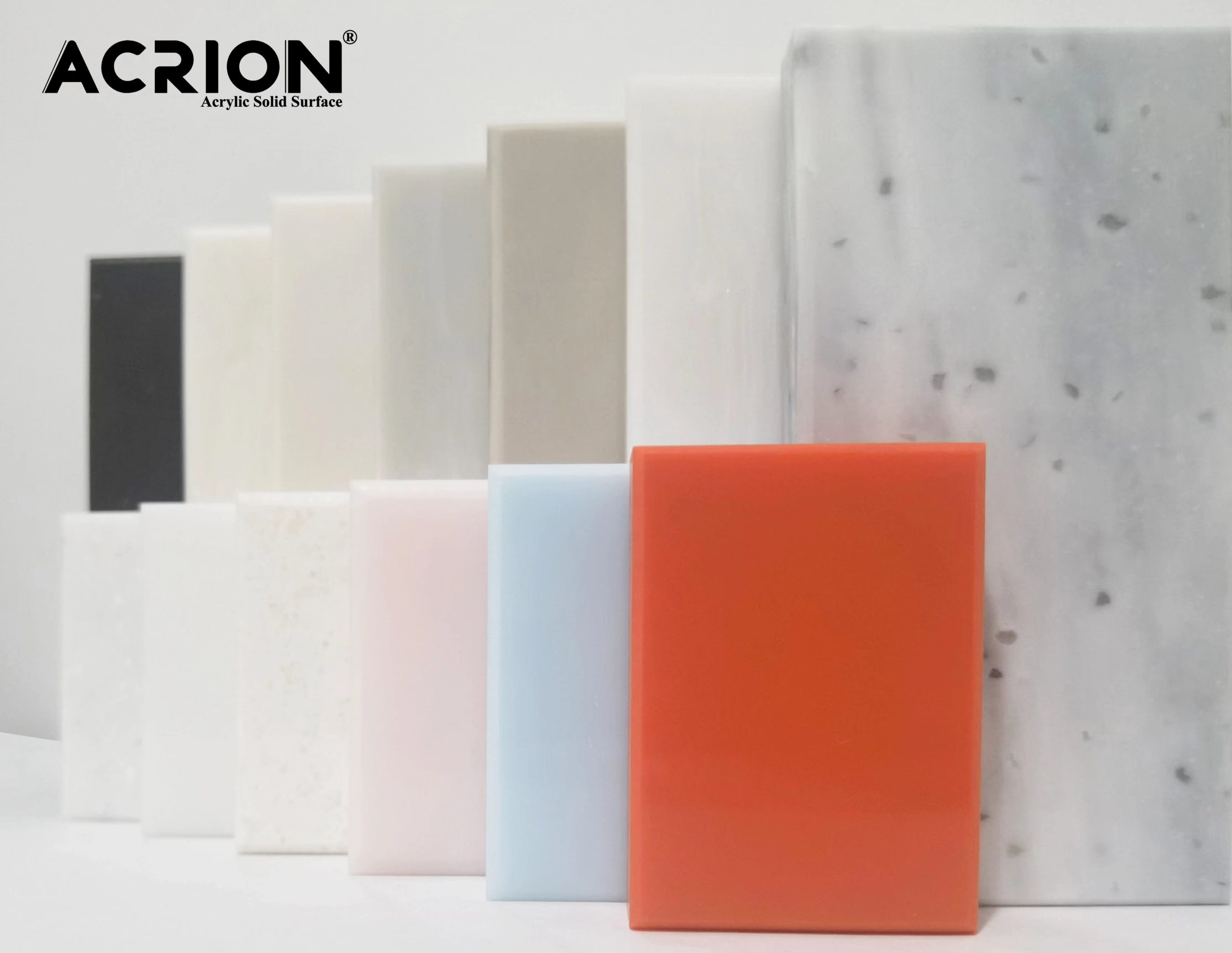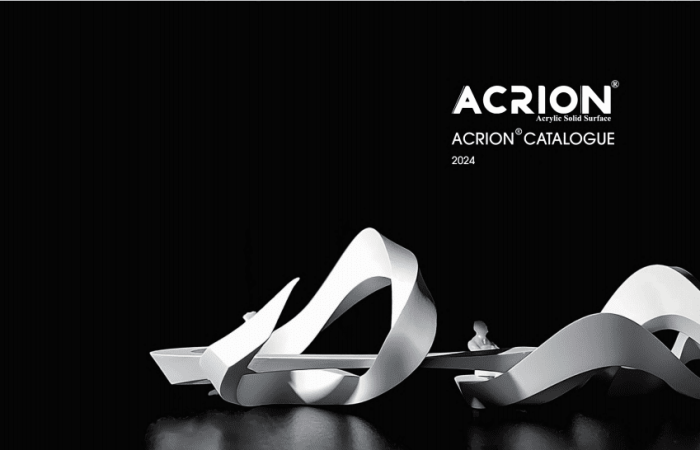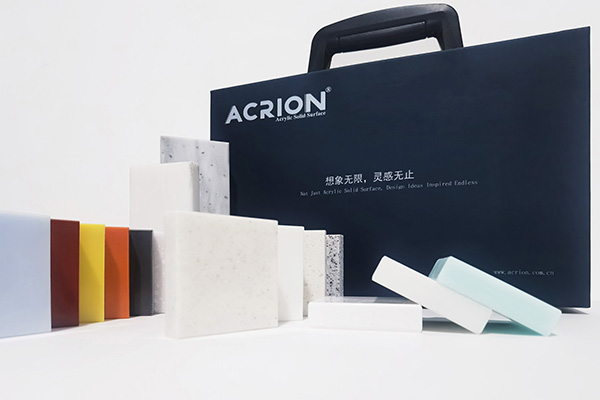วิธีคืนค่าความมันวาวของเคาน์เตอร์ ACRION: คู่มือที่ครอบคลุม
เคาน์เตอร์ ACRION มีชื่อเสียงในด้านความทนทานและความสวยงาม แต่เมื่อเวลาผ่านไปการตกแต่งที่มันวาวอาจลดลงเนื่องจากการสึกหรอรอยขีดข่วนหรือการสัมผัสทางเคมีทุกวัน การกู้คืนความเงางามแบบดั้งเดิมนั้นต้องใช้วิธีการที่เป็นระบบที่จัดการกับความไม่สมบูรณ์ของระดับพื้นผิวและความเสียหายที่ลึกซึ้งยิ่งขึ้น คู่มือนี้ให้ขั้นตอนที่สามารถดำเนินการได้เพื่อฟื้นฟูเคาน์เตอร์ ACRION ของคุณโดยไม่ต้องมีการแทรกแซงอย่างมืออาชีพ
ทำความเข้าใจกับสาเหตุของความหมองคล้ำ
ก่อนเริ่มการฟื้นฟูให้ระบุสาเหตุของการสูญเสียความมันวาว ผู้ร้ายทั่วไป ได้แก่ :
- รอยขีดข่วนพื้นผิว: เส้นเล็กที่เกิดจากเครื่องมือทำความสะอาดขัดหรือวัตถุมีคม
- ความเสียหายทางเคมี: การสัมผัสกับสารที่รุนแรงเช่นน้ำยาทำความสะอาดเตาอบหรือน้ำยาล้างเล็บเป็นเวลานาน
- คราบน้ำ: แร่ธาตุจากน้ำกระด้างมักปรากฏเป็นแพทช์ที่มีเมฆมาก
- เครื่องหมายความร้อน: การเปลี่ยนสีจากหม้อร้อนหรือกระทะที่วางอยู่บนพื้นผิวโดยตรง
- การทำความสะอาดที่ไม่เหมาะสม: การใช้น้ำยาทำความสะอาดที่เป็นกรดหรือขัดที่กัดเซาะชั้นป้องกัน
กระบวนการฟื้นฟูทีละขั้นตอน
1. การทำความสะอาดอย่างลึกเพื่อกำจัดสารปนเปื้อนของพื้นผิว
เริ่มต้นด้วยการทำความสะอาดเคาน์เตอร์อย่างละเอียดเพื่อกำจัดสิ่งสกปรกจาระบีและสารตกค้างที่อาจปิดบังสภาพที่แท้จริงของพื้นผิว
- วิธี: ผสมสบู่จานอ่อนกับน้ำอุ่นและใช้โดยใช้ผ้านุ่มและไม่ใส่ใจ สำหรับคราบที่ดื้อรั้นให้สร้างเบกกิ้งโซดาและน้ำให้ใช้กับพื้นที่ที่ได้รับผลกระทบและปล่อยให้นั่งเป็นเวลา 10 นาทีก่อนที่จะขัดด้วยฟองน้ำเบา ๆ
- เคล็ดลับ: หลีกเลี่ยงการใช้น้ำส้มสายชูหรือน้ำมะนาวเนื่องจากธรรมชาติที่เป็นกรดของพวกเขาสามารถสร้างความเสียหายให้กับพื้นผิวเอเคอร์เมื่อเวลาผ่านไป
2. การกำหนดรอยขีดข่วนพื้นผิวผ่านการขัด
สำหรับรอยขีดข่วนเล็กน้อยและความหมองคล้ำการขัดเป็นทางออกที่มีประสิทธิภาพ องค์ประกอบที่เป็นเนื้อเดียวกันของ Acrion ช่วยให้สามารถซ่อมแซมได้อย่างราบรื่นโดยไม่ต้องใช้ตะเข็บที่มองเห็นได้
- เครื่องมือที่ต้องการ-
- กระดาษทรายเปียก/แห้ง 400 กรวดสำหรับการกำจัดรอยขีดข่วนเริ่มต้น
- กระดาษทรายเปียก/แห้ง 600 กรวดเพื่อให้เรียบและขัด
- ขวดสเปรย์ที่เต็มไปด้วยน้ำเพื่อให้พื้นผิวหล่อลื่นระหว่างการขัด
- กระบวนการ-
- ขั้นตอนที่ 1: เปียกเคาน์เตอร์และกระดาษทราย เริ่มขัดพื้นที่รอยขีดข่วนในการเคลื่อนไหวแบบวงกลมโดยใช้แรงดันแม้ ดำเนินการต่อไปจนกว่ารอยขีดข่วนจะไม่ปรากฏอีกต่อไป
- ขั้นตอนที่ 2: เปลี่ยนไปใช้กระดาษทราย 600 กรวดและทำซ้ำกระบวนการโดยมุ่งเน้นที่การผสมผสานพื้นที่ทรายกับพื้นผิวโดยรอบเพื่อหลีกเลี่ยงความไม่สม่ำเสมอ
- ขั้นตอนที่ 3: ล้างเคาน์เตอร์ให้สะอาดด้วยน้ำสะอาดและทำให้แห้งด้วยผ้าไมโครไฟเบอร์
3. การขัดเพื่อฟื้นฟูเงา
หลังจากการขัดแล้วการขัดจะช่วยเพิ่มความเงางามและสร้างสิ่งกีดขวางป้องกันความเสียหายในอนาคต
- เครื่องมือที่ต้องการ-
- สารประกอบขัดเงาที่ออกแบบมาสำหรับพื้นผิวที่เป็นของแข็ง (หลีกเลี่ยงการขัดเงายานยนต์ซึ่งอาจมีสารกัดกร่อนรุนแรงเกินไปสำหรับ ACRION)
- ผ้านุ่มไร้ขุยหรือแผ่นขัดที่ติดอยู่กับเครื่องขัดวงโคจร (ใช้ด้วยความเร็วต่ำเพื่อป้องกันความร้อนสูงเกินไป)
- กระบวนการ-
- ใช้สารประกอบขัดเล็กน้อยกับเคาน์เตอร์หรือแผ่นขัด
- ทำงานเป็นส่วน ๆ ขัดผิวในการเคลื่อนที่แบบวงกลมจนกว่าสารประกอบจะแห้งเป็นหมอกควัน
- เช็ดสารตกค้างด้วยผ้าสะอาดและตรวจสอบความเงางาม ทำซ้ำถ้าจำเป็น
4. การถอดคราบน้ำและเครื่องหมายความร้อน
คราบน้ำและเครื่องหมายความร้อนต้องใช้การรักษาเป้าหมายเพื่อฟื้นฟูความชัดเจนและความสมดุล
- คราบน้ำ-
- สร้างเบกกิ้งโซดาและน้ำและนำไปใช้กับคราบ
- ครอบคลุมพื้นที่ด้วยห่อพลาสติกแล้วปล่อยให้นั่งค้างคืน
- ในวันถัดไปขัดด้วยฟองน้ำและล้างออกอย่างทั่วถึง
- เครื่องหมายความร้อน-
- สำหรับการเปลี่ยนสีของแสงให้ใช้น้ำมันมะกอกจำนวนเล็กน้อยหรือน้ำยาล้างเครื่องหมายความร้อนแบบพิเศษไปยังพื้นที่ที่ได้รับผลกระทบและบัฟด้วยผ้านุ่ม
- สำหรับคะแนนที่ลึกกว่าให้ทำซ้ำกระบวนการขัดที่อธิบายไว้ก่อนหน้านี้เริ่มต้นด้วยกรวดที่ละเอียดกว่า (เช่น 800-grit) เพื่อลดการกำจัดพื้นผิว
รักษาความมันวาวในระยะยาว
หากต้องการยืดความเงางามของเคาน์เตอร์ Acrion ของคุณให้ได้รับการฟื้นฟูให้ใช้มาตรการป้องกันเหล่านี้:
- ใช้บอร์ดตัดและ Trivets: วางบอร์ดตัดใต้มีดและมีสามสามครั้งไว้ใต้หม้อร้อนและกระทะเพื่อป้องกันรอยขีดข่วนและความเสียหายจากความร้อน
- ทำความสะอาดรั่วไหลทันที: เช็ดสารที่เป็นกรดเช่นน้ำส้มหรือไวน์ทันทีเพื่อหลีกเลี่ยงการแกะสลัก
- หลีกเลี่ยงเครื่องมือขัด: เลือกฟองน้ำนุ่ม ๆ หรือผ้าไมโครไฟเบอร์แทนผ้าขนสัตว์เหล็กหรือแผ่นลาง
- การขัดปกติ: กำหนดเวลาการขัดรายเดือนเพื่อรักษาชั้นป้องกันและเพิ่มความเงางาม
การแก้ไขปัญหาทั่วไป
แม้จะมีความพยายามอย่างเต็มที่คุณอาจเผชิญกับความท้าทายในระหว่างกระบวนการฟื้นฟู นี่คือวิธีการจัดการกับพวกเขา:
- ความเงางามหลังจากขัดเงา: สิ่งนี้อาจเกิดขึ้นได้หากกระบวนการขัดไม่สอดคล้องกัน เก็บพื้นที่ที่ได้รับผลกระทบอีกครั้งด้วยปลายข้าวและขัดเงาอีกครั้ง
- รอยขีดข่วนถาวร: หากรอยขีดข่วนยังคงอยู่หลังจากขัดด้วยกระดาษ 600 กรวดให้ย้ายไปที่กรวด 800 กรวดหรือสูงกว่าเพื่อให้ได้ผิวที่เรียบเนียนขึ้น
- ความหมองคล้ำหลังจากทำความสะอาด: ตรวจสอบให้แน่ใจว่าคุณใช้น้ำยาทำความสะอาดที่เป็นกลางและหลีกเลี่ยงแผ่นขัด หากปัญหายังคงมีอยู่อาจจำเป็นต้องใช้เสื้อโค้ทใหม่ของโปแลนด์
โดยทำตามขั้นตอนเหล่านี้และรวมการบำรุงรักษาเป็นประจำในกิจวัตรประจำวันของคุณคุณสามารถทำให้เคาน์เตอร์ Acrion ของคุณดูดีเหมือนใหม่ในอีกหลายปีข้างหน้า ไม่ว่าคุณจะจัดการกับรอยขีดข่วนเล็กน้อยหรือคราบดื้อรั้นความอดทนเล็กน้อยและเทคนิคที่เหมาะสมจะฟื้นฟูความมันวาวและความงามดั้งเดิม



